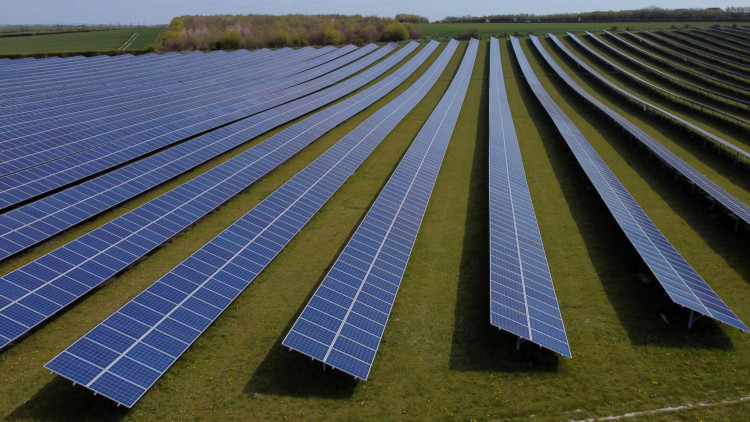Rice University engineers have set a new standard in the construction of atomically thin solar cells constructed with semiconducting perovskites, increasing their performance while maintaining their environmental resistance.
Sunlight itself contracts the space between atomic layers in 2D perovskites, improving the material's photovoltaic efficiency by up to 18%, according to Aditya Mohite's lab at Rice's George R. Brown School of Engineering, a remarkable leap in a field where progress is often measured in fractions of a percent.
"In 10 years, the efficiencies of perovskites have skyrocketed from about 3% to over 25%," Mohite said. "Other semiconductors have taken about 60 years to get there. That's why we're so excited."
Perovskites are compounds that have cubelike crystal lattices and are highly efficient light harvesters. Their potential has been known for years, but they present a conundrum: They're good at converting sunlight into energy, but sunlight and moisture degrade them.
Rice engineers and collaborators from Purdue and Northwestern universities in the U.S., The Institute of Electronics and Digital Technologies (INSA) in Rennes, France, and the Department of Energy national laboratories Los Alamos, Argonne, and Brookhaven discovered that sunlight effectively shrinks the space between the atoms in certain 2D perovskites, improving their ability to carry a current.
Placing an organic cation layer between the iodide on top and the lead on the bottom improved interactions between the layers, according to the researchers.
The 2D perovskites contracted by 0.4% along their length and around 1% top to bottom after 10 minutes in a solar simulator at one-sun intensity, according to both results. They showed that under five-sun intensity, the effect can be evident in one minute.
"It doesn't sound like a lot, but this 1% contraction in the lattice spacing induces a large enhancement of electron flow," Rice graduate student and co-lead author Wenbin Li said. "Our research shows a threefold increase in the electron conduction of the material."
At the same time, the lattice structure of the material made it less susceptible to degradation, even when heated to 80 degrees Celsius (176 degrees Fahrenheit). When the light was switched off, the lattice quickly relaxed back to its usual form, according to the researchers.
The researchers used two US Department of Energy (DOE) Office of Science user facilities to observe the material contraction in action: the National Synchrotron Light Source II at DOE's Brookhaven National Laboratory and the Advanced Photon Source (APS) at DOE's Argonne National Laboratory.
The research appears in Nature Nanotechnology.





